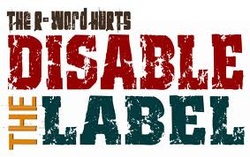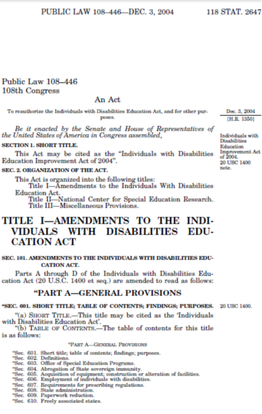|
We are deeply saddened by the death of Judson Albahm amid his mental health crisis. We are proud of Judson for his forethought in seeking help in facing his challenges and disappointed that he could not find the help he needed. Central New York families are sadly familiar with the struggle to access appropriate mental health care. We mourn with Judson’s family and join with them in calling for the marshaling of resources to adequately care for vulnerable members of our community like Judson.
The closures of outpatient mental health facilities in Onondaga County have left families adrift as they seek help for their loved ones and for themselves. The inadequate understanding of the needs of autistic people further leaves people like Judson with limited options for treatment or support during a crisis. We encourage families in crisis to reach out to Upstate University Hospital’s Emergency Psychiatry Service, located at the downtown campus, for care. In service, Sanchia A. Callender, Inc Autism Mental Health Initiative Advisory Council Parents for Public Schools of Syracuse, Inc Neurodiversity Consulting LLC The Academy of Excellence, Inc Joshua Michael King for Students Masking and Kompany
2 Comments
 New York state education regulations as written and implemented throw stumbling blocks in the paths of students with IEP/504 Plans. In New York state a student with an IEP/504 Plan that includes an extended time testing accommodation can end up enduring 12 hours of testing to complete Regents exams if they have two exams scheduled on the same day. New York doesn't reschedule these exams to accommodate students with IEP/504 Plans. One option is for the student to take one of the exams months later during one of the other allowed testing period in January, June, and August. The other option is to not take one of the exams at all. The New York State Education Department will, on a case by case basis, allow schools to petition the state for permission to administer a test over multiple consecutive days to a student with this accommodation in their IEP/504 Plan. The petition has to be made months in advance of the scheduled exam and the state still has the option to turn down the request. Parents have to know this option is available to their students and school staff also have to be aware. The regulations in question are here. Are accessible to families, students, or school staff? No. I'm not sure how you would find them if you didn't already know where to look and what to look for. Are they clear as to their purpose and how they can be implemented? No. If this seems like an undue burden to place on students with IEP/504 Plans you are not mistaken. It is unclear how many students in New York state have their educational careers sabotaged by ambiguous and inflexible state regulations. What is clear is that these regulations need to give way to the precedents established by IDEA (download a copy if you don't have one) guaranteeing students with disabilities free access to an education. Right now students in New York state with IEP/504 Plan do not have that free access. That must change.
*From December 2007. This brilliant advertising campaign was supposed to raise the profile of autism or something. Still not sure why so many learned people thought this was an okay way to present autism and the people who live with autism to the world. This is quite repulsive. In a society that seems to put self esteem above all else for children it seems that it is quite alright to degrade individuals with developmental delays and psychiatric disorders and perpetuate stereotypes about them under the guise of raising awareness. The kids really did spend Christmas playing with the boxes the toys came in. *Originally posted on my personal blog.
In 2014 Congress passed the ABLE Act enabling families of disabled children to save for long term care expenses for their children without penalty. ABLE qualifying accounts are tax exempt and do not count against individuals when applying to government programs. As expected the ABLE Act 2014 comes with some strings attached. There are saving and spending limits for qualifying accounts as well as penalties for funds used for unapproved expenses. Now a bipartisan update to the original 2014 version of the ABLE Act, called ABLE 2.0 is in the works. The idea of ABLE 2.0 is to transform the current ABLE Act 2014 into what would essentially be government run estate planning. The ABLE 2.0 package includes three bills. The ABLE to Work Act allows individuals and families to save more money — up to the federal poverty level — in their accounts if the beneficiary works and earns income. The ABLE Financial Planning Act allows families to roll over savings in a 529 college savings plan into an ABLE account and prevents these funds from being trapped or fined if a child is born with a disability or acquires one later in life. The ABLE Age Adjustment Act raises the age limit for ABLE accounts from 26 to 46, helping people whose disability or disease develops later in life. Some are excited about this development, “Let’s enable parents of special-needs kids to set money aside for lifetime care” believing that it will open up estate planning to the less “well-to-do.” In the past, this kind of long-term disability planning generally required complicated and expensive trusts, and was thus the sole province of the well-to-do. On its face, ABLE 2.0 looks to be a good development for Americans with disabilities allowing families to save more, be more flexible with how they save, and recognizing that disability can happen at any time during the life span. Having utilized government programs designed to help the poor and the less “well-to-do” I’m cautious about extending more government control over the finances of individual Americans than it already has. Government programs like this tend to become bloated, difficult to access, and are more of a burden than a help.
Americans can already do what ABLE 2.0 proposes to help Americans do. Having gone through the “complicated and expensive” process of setting up a trust it isn’t that complicated. It did cost and it was worth every penny we saved to pay for the process. I recommend every family with disabled loved ones research their estate planning options before tying themselves to government options. Go to a free legal clinic for advice on how to get it done. Check the local library for resources on estate planning. There’s always google as well. Estate planning doesn’t have to be the “sole province of the well-to-do” in the information age. Eleven days to go in the funding campaign. Here are some topics to be covered in Parenting Autism: prevalence rates and what they mean for the future; protecting parent and child mental health; dealing with problem behavior; the search for the causes of autism and what that means for the parent-child relationship; the idea of recovery from autism and its influence on the lives of autistic people. If you've got any thoughts on these issues or have other issues that you think important to parenting autism please share. Click to set custom HTML Your praise may be the only good thing they hear about themselves all day so make it really count. Another school year has started and my kids are all getting used to the routine of a new grade and a new set of teachers. I spent this morning meeting with every teacher of my children that I could find. My fifth grader’s teacher and I had a particularly long chat. This teacher also had my seventh grader two years ago when he went through fifth grade. We had a good chuckle about what a challenge that was for him, the teacher. My current fifth grader is one of those challenging kids that may find his way to a self contained classroom if school staff can’t find an effective way to manage his behavior at school. I’ve introduced the Nurtured Heart Approach® into our conversations about my fifth grader. We’ll see how receptive the school staff are to it. I’ve had a great deal of success with NHA® at home. But that’s not quite what this post is about. While we were chatting I mentioned the fact that my fifth grader is a great student of human behavior. This prompted my son’s teacher to go on and on about how sensitive his autistic students are to the behavior and emotions of the staff and students working with them. He seemed in awe of their abilities to do. I was pleased to hear him make this observation about his students. He described how it might take a typical student a week to figure out how to push the teacher’s buttons where one of his autistic students could figure it out after just one go. Often times people think that autistic people are not dialed in to what’s going on around them. But the truth that my son’s teacher recognizes is that autistic children and adults are often fully aware of the emotional soup that we are all drifting in. Their social challenges put them in the situation of having to be very creative in how they get their needs met. Often times what gets them the most attention is acting out.
At this point I jumped on my NHA® soapbox and pointed out that NHA® is the perfect way to short circuit the negative attention seeking. By refusing to give energy to the negative and instead giving it to the positive these sensitive students can learn how to interact in a healthy fashion with everyone in the classroom. But going back to the sensitive nature of autistic people, my son’s teacher commented that while not all of his students have been verbal they have clearly been aware of what was said to them and about them. While the main tendency is to characterize autistics by what they cannot do or by what they have difficulty doing it behooves us to remember what they can do. Sometimes we have to remind them about what they can do. The constant focus on what a person can’t do can leave anyone feeling as if they can do nothing. So if you are a person of influence in the life of someone with autism, or some other special need, take the time to see what they are good at. See what they are doing right. Then take your sweet time telling them all about how awesome they are. The sad truth is that your praise may be the only good thing they hear about themselves all day so make it really count.  By Samantha Pierce In sociology there is a theory, called the Sapir-Whorf thesis (also known as linguistic relativity) , which claims “people see and understand the world through the cultural lens of language.” (Macionis, 2011)* To put it another way, language creates reality. Since Edward Sapir and Benjamin Whorf first put forth their theories on the relationship between language and reality in the first half of the last century sociologists have come to the conclusion that language doesn’t determine reality in any strict sense. For my part I think our language reflects our reality rather than genuinely creates it. But we still act as if we believe that language creates reality. Consider the terms used to describe people with developmental disabilities. First we had imbeciles, morons, idiots. All originated as clinical terms to describe the developmentally disabled. We now know them as throw away insults used by young and old alike. In the span of a few decades we have seen the term “retarded”, once a clinical descriptor for those with developmental delays, degenerate into an insult so grave that there is a movement to stamp out the use of the word. It’s called the euphemism treadmill where new terms are developed to replace old terms that have come to be seen as derogatory. Even the term “special needs” seems to be taking its turn on the euphemism treadmill for some. All of this brings to me to the person, or people, first language movement. “People-first language is a form of linguistic prescriptivism in English, aiming to avoid perceived and subconscious dehumanization when discussing people with disabilities, as such forming an aspect of disability etiquette.” The idea is basically to name the person first and the descriptor of their condition second. In English we usually do things the other way round. Such tinkering with English sentence structure is seen by some as a good thing for the disabled. It is an effort to create a reality where the personhood of the disabled is valued and respected. In essence it is an attempt to apply the Sapir-Whorf thesis in its language creates reality form. Advocates of person first language claim that we should embrace person first language “To ensure inclusion, freedom, and respect for all.” I agree with some of the sentiments expressed in the above linked article, such as, “The real problem is never a person’s disability, but the attitudes of others! A change in our attitudes leads to changes in our actions. Attitudes drive actions.” But I am more than a bit skeptical that acts of linguistic gymnastics will make any forward movement towards better treatment of and greater respect for the disabled. Unless we work to change attitudes about the disabled within our culture and within our society it’s not going to matter what clumsy, politically correct term is dreamed up next to gloss over the fact that the disabled are greatly devalued in our culture. Person, or people, first language hinges on the idea that a person is a person first and their disability is secondary to their personhood. Now the problem with this kind of thinking is why anyone would think that identifying someone with their disability somehow denies their personhood. Another problem with person first language is that despite the fact that many of the disabled themselves reject the use of person first language and the reasoning behind it other, often nondisabled people, keep pushing for its use. In researching this article I found very few references among supporters of person first language to the opinions of the disabled about person first language (the two references were from Wikipedia and About.com. |
Categories
All
Archives
December 2021
|
||||||||
Photo from Hayzphotos

 RSS Feed
RSS Feed
